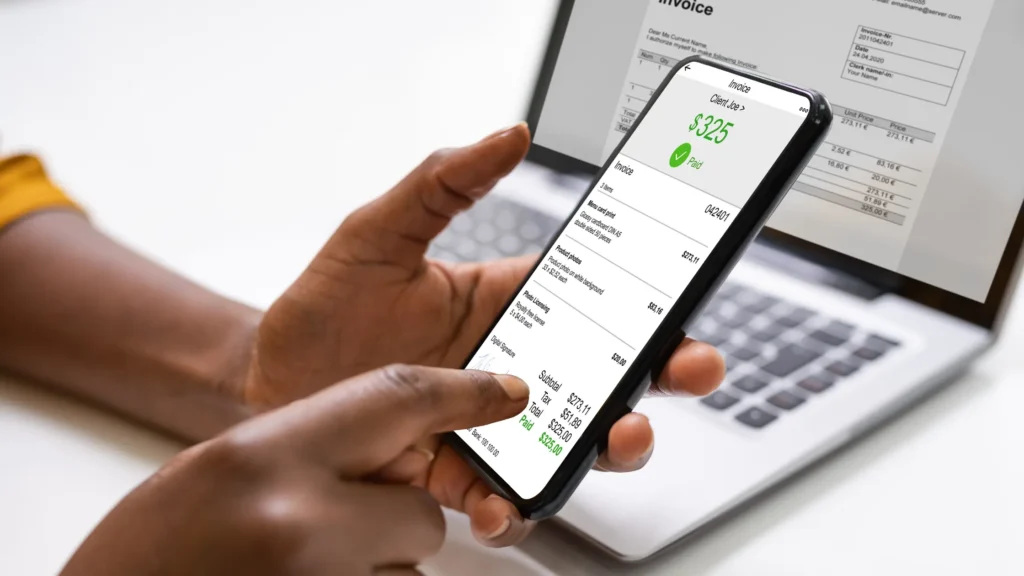How To Keep Track of Your Receipts for Tax
Receipts have a habit of slipping away, but when it comes to tax time, they’re essential for keeping accurate records.
The Australian Taxation Office (ATO) requires clear records to support any deductions and ensure compliance. This includes details such as the supplier, the goods or services purchased, the date, and the amount. Whether you maintain paper or digital records, consistently tracking your expenses simplifies the process of categorising costs, such as vehicle expenses, laundry, or expenses related to an investment property.
Organised bookkeeping now ensures a smoother tax process later, whether you’re lodging your return or providing records to your tax agent or business advisor. One of these key financial matters that we all dread is tax. For those with complex tax returns to file, with many expensive deductions to record, receipts are critical.
So, how do you stay on top of them? How does one ensure these scrappy pieces of thermal paper don’t disappear into the abyss? While we live in a highly digital world, many receipts these days are still kept in the physical world, so it’s important to have a system to record these. Digital records offer an efficient and secure alternative to paper receipts, making it easier to store and back up important tax and financial documentation.
At Shoebox Books & Tax we’ve got you covered. Here are our expert tips for keeping your receipts organised.
But First, Why Should You Keep Receipts for Your Tax Return?
For tax purposes, receipts are essential. Receipts provide evidence for all purchases incurred that you want to claim as work-related expenses. Keeping paper records is crucial for compliance and audit purposes, as physical documentation helps meet legal and regulatory standards. While we live in a highly digital world, many receipts these days are still kept in the physical world, so it’s important to have a system to record these. Having an organised record of purchases is necessary in operating a successful business as well as streamlining your own personal life before tax time rolls around.
There are legal requirements for keeping receipts and financial documents for tax purposes, so proper record-keeping is essential. Maintaining accurate financial records not only ensures you meet legal requirements but also supports your business’s financial health and effective financial planning. Whether you want to better organise your receipts, manage your business expenses, or simply become a smarter budgeter, these tips will help you keep track of every work-related receipt.
- Receipts help you claim deductions for work-related expenses.
- They provide proof of purchase in case of an audit.
- Organised receipts make it easier to track spending and manage budgets.
- Small businesses benefit from organised receipts for tax compliance, financial accuracy, and effective financial management.
1. Quickly File Your Receipts
Have you ever started a task, only to get distracted and completely forget what you were doing? Don’t stress, we all have. It’s only human nature, we aren’t great at remembering lots of information at once. Therefore, something you should get into the habit of doing is recording your receipts as soon as you possibly can. Especially if you’re a business that is juggling many of them. It’s important to record expenses at the time you incur expenses to ensure accuracy in your records.
Put aside time during the day (or week at the latest) to organise your receipts before they pile up. Another great habit to get into is noting (on the receipt or some kind of document) the business purpose of the receipt – just in case you forget down the track. If you’re a small business owner, you may have already dealt with the fun task of having to differentiate work and personal receipts from the stack. Making these notes on a daily to weekly basis keeps the purchase fresh in your mind and helps with recording important receipts, and double-checking your entries to ensure accuracy when filing receipts.
2. Categorise Your Receipts For Work Related Expenses
The next thing you can do to make your life even easier is to start categorising your receipts in a filing system; this saves you time down the track when you need to look for a specific receipt. No more hunting through hundreds of little papers, you’ll know exactly where it is. Categorising receipts by the type of goods or services purchased also helps ensure accurate record-keeping and supports tax compliance. Here’s a simple category system:
Personal Expenses
- Meals and Entertainment
- Rent
- Insurance
- Gifts
- Education/ Work Expenses
- Charity donations
- Travel expenses
Business Expenses
- Advertising and promotions
- Supplies and furniture
- Subscriptions
- Legal and professional fees
- Charity donations
Categorising receipts in this way also helps you track income and reconcile your financial records.
3. Or Even Better, Go Paperless!

One of the most annoying aspects of paper receipts is that the ink fades over time, which, of course, makes the receipt very difficult to read down the track (hack: gently blow-dry the receipt to make the ink reactivate). That’s why it’s ideal to get a digital receipt where possible or find a way to store your physical one electronically.
To store your receipt electronically, you can scan it into the computer – this can be done with a scanning machine or even through phone apps. Once scanned, categorise your receipts into your computer filing system (use a cloud-based drive to ensure you never have to worry about it being deleted) and then toss out the old receipt. Done!
4. Use Your Phone Camera
If you’d rather skip using scanners or apps, simply photographing your receipts with your phone is an effective alternative. Again, remember to make folders or albums where you can collect these receipts digitally and ensure you back these images onto a cloud-based drive so that they don’t disappear. This will also make your life easier if you ever need to find a receipt image; you won’t have to go scrolling through hundreds of images in your camera roll.
5. Get An App For Record Keeping To Organise Your Receipts
If the sound of cluttering up your camera roll with pictures of receipts doesn’t sound appealing, you’ll be glad to know there are smarter solutions available. Digital record-keeping apps not only store your receipts securely but also generate expense reports, making financial tracking seamless and stress-free.
Two standout tools we recommend to clients and franchisees are Hubdoc and the ATO’s myDeductions app.
Hubdoc integrates directly with Xero, automatically capturing receipts, bills, and invoices and feeding the data straight into your accounting software. This eliminates manual data entry, saves valuable time, and ensures your bookkeeper or accountant has everything they need at their fingertips.
The ATO’s myDeductions app is another excellent option, particularly useful for sole traders. It allows you to track expenses, manage receipts, and even pre-fill your tax return directly, streamlining the compliance process and reducing the risk of missing deductible expenses.
Both tools are designed to take the pain out of record-keeping so you can focus on growing your business rather than drowning in paperwork.
Pro Tip: Unsure which solution is right for you? A Shoebox Bookkeeper can help set you up, keep your records in order, and make sure everything is accurate, giving you more time to focus on running, and scaling, your business.
6. Be Consistent

The simplest and yet somehow most challenging tip we can give you is to be consistent (it definitely sounds easier than it is). Even with the above tips, the most crucial step in organising your receipts is to stick with it consistently – think of it like building a habit. If you struggle with being consistent, try making a schedule for yourself to stick to. This is particularly important for businesses; plan out a day in your week to knuckle down and get your receipts filed. As an additional tip, you’ll also make your life a lot easier if you keep your business and personal expenses separate. For example, use a “business only” credit card and avoid paying for goods, bills and services in cash to better record your spending.
If your current “system” is a shoebox and a prayer, it’s time to upgrade it. Switch to digital records for day-to-day record keeping, then let a pro review your financial information before you lodge your tax return. Shoebox Books & Tax can sort messy records, streamline bookkeeping tasks, and point you to the expenses you can claim, without guesswork.
Shoebox connects you with your closest and most qualified bookkeeper to help you with financial matters relating to your business. With bookkeepers all around Australia, you are one click away from finding help with our online search feature. Book a call with one of our experienced bookkeepers to get your receipts, income statements, and financial records in order, ensuring a smoother and faster tax process this year.